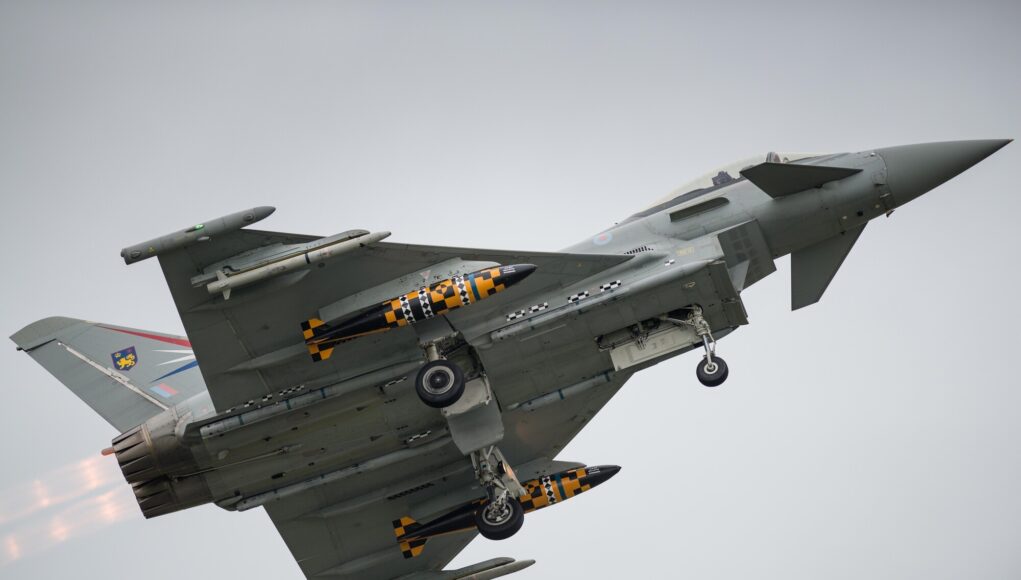Typhoon development aircraft IPA6 has reached the “unusual” milestone of its 1,000th flying hour.
IPA jets are specially built aircraft that function as airborne science labs, playing a critical role in the development and testing of the Eurofighter Typhoon.
Eurofighter recently conducted an interview with BAE Systems Chief Test Pilot Steve Formoso about the role of Instrumented Production Aircraft (IPA) in the Eurofighter Typhoon fleet.
Formoso shared his experience of the Heavy Landing Trial, which is a crucial test to ensure the safety of the missile. The test involves a series of repeated landings that are carried out in a controlled but increasingly heavy manner.
The telemetry team monitors each landing as the aircraft goes around the circuit. The team worked out a technique to achieve increasingly heavier landings, known as a ‘touch and go’ landing, where the wheels hit the runway but the aircraft takes off again. The test involved 24 repetitions.
Formoso emphasised the importance of teamwork and a controlled approach to achieve the desired results while ensuring safety.
The trial involved five flights and a total of 94 landings.














Designed late 1970s, first flight 1994, entering service 2003 & therefore 20 years old, we’re still doing trials?
Yes. Trials for future developments and upgrades. New equipment is delivered to the frontline on an almost continuous development path instead of the traditional “mid life upgrade”. For Typhoon they are called PE’s or Phased Enhancements.
Continuous Improvement is an engineering best practice so glad that a continuous development path is funded to assure relevance to the emerging threats. It’s always been how engineers work but remarkable that it’s funded. Perhaps an advantage of consortium programmes compared to single national effort (HM Treasury)…
I think it’s just lessons learned from the past, that continuous development is more cost affective. And the ability to add software drops instead big hardware changes allows the technology to be easily implemented. As long as the computing power is available to support it. TR3 to enable Blk4 for the F35 is a good example.
If all goes to plan that is.
Development of TR-3 is now not expected to be finished until April 2024, a year later than expected. Lockheed Martin is hoping to be able to finish the work sooner, perhaps by December of this year, according to Schmidt. He further clarified that this goal is defined as being able to support TR-2-equivalent capabilities on a representative TR-3-configured aircraft. The additional Block 4 upgrade package is not currently expected to roll out until 2029.
https://www.thedrive.com/the-war-zone/f-35-engine-running-too-hot-due-to-under-speccing-upgrade-now-vital
Yes. They’ll be continuously upgraded and trialled on new developments throughout their lives. Otherwise you end up with stagnation and planes that were top of the line but even a few years later are looking obsolescent.
PC invented in the 70s, people had windows in 1994. Windows XP in 2003. We still get new software operating systems and hardware?
Unfortunate bit of sub-editing. Was much left of the milestone?
Upgrades? While the Typhoon has its own strengths.
The typhoon should have had thrust vectoring” a long time ago along with more powerful engines. Plus a host of other aerodynamic upgrades. It looks like a 70’s aircraft. As with most other do it all fighter jets. It as neither the range or ceiling of a True interceptor or” the super manoeuvrability of an air superiority fighter.
What missile?
Rolls-Royce have been doing this type of development with their engines since I was an apprentice there 65 years ago.